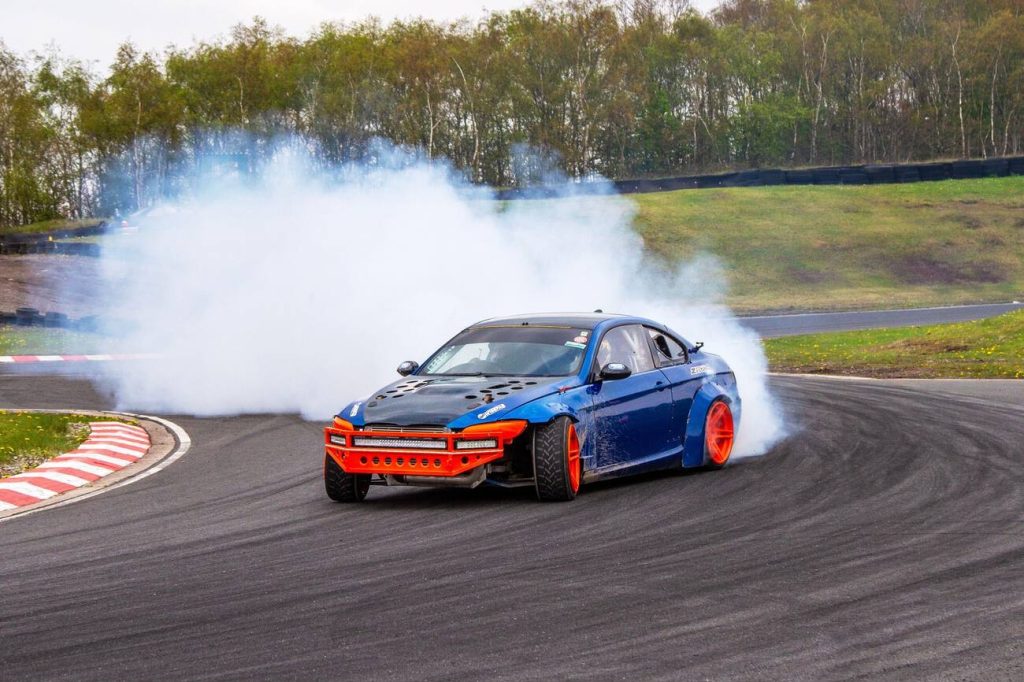Car racing encompasses various disciplines, each with its own unique set of challenges. From Formula One to MotoGP, Rally Racing to Endurance Racing, there’s no shortage of adrenaline-pumping action. So, get ready to dive into the world of high-speed turns, sustained stress, unpredictable terrains, and teamwork. In this article, we’ll explore what makes these different forms so tough and find out which one takes the crown as the hardest form of car racing.
Formula One Racing
Formula One racing is known for its high-speed turns and demanding physical endurance. From a driver’s perspective, Formula One racing presents both mental and physical challenges. The drivers must maintain focus and concentration while navigating the complex circuits at speeds exceeding 200 miles per hour. They also experience intense G-forces during acceleration, braking, and cornering, which puts a strain on their bodies. In terms of technical aspects, Formula One racing showcases advanced technology and aerodynamics. The cars are equipped with cutting-edge engineering to maximize speed and performance. Team dynamics play a crucial role in Formula One racing as well. Collaboration between the driver, engineers, and pit crew is essential for strategy development and seamless execution during races. Famous rivalries add an extra layer of excitement to the sport, fueling intense competition both on and off the track. Finally, safety innovations have continuously been improved in Formula One racing to protect drivers from accidents and injuries through measures like reinforced cockpits, stronger helmets, and advanced safety systems in the cars.
MotoGP Racing
MotoGP racing requires exceptional reflexes, physical fitness, and control, pushing the limits of motorcycle technology. To excel in MotoGP, you need a combination of rider skills, motorcycle technology, mental and physical fitness, high-speed racing, and impeccable reflexes and control.
- Rider skills: MotoGP riders must possess extraordinary riding abilities to navigate through challenging tracks and corners at incredible speeds.
- Motorcycle technology: Advanced motorcycles with cutting-edge technology are essential for competitive performance in MotoGP races.
- Mental and physical fitness: The intense physical demands of MotoGP require riders to be in peak condition both mentally and physically.
- High-speed racing: Racing at incredibly high speeds puts immense pressure on riders to make split-second decisions while maintaining control.
In MotoGP, the combination of these factors creates a highly demanding sport that tests the limits of both human capabilities and technological advancements.
Rally Racing
Rally racing requires drivers to navigate rough terrain at high speeds, making split-second decisions and showcasing exceptional car control skills. Mastering the art of navigation and car control is crucial in rally racing. Drivers must be able to read the road ahead, anticipate obstacles, and adjust their driving technique accordingly. Rallying techniques such as power slides, handbrake turns, and precise braking are essential for maintaining control on unpredictable surfaces.
When comparing rallying to endurance racing, both forms of racing present unique challenges and strategies. Endurance races require drivers to maintain focus and concentration over extended periods of time while balancing speed with mechanical reliability. In contrast, rally races demand quick decision-making and adaptability to rapidly changing conditions.
Famous rally events like the Dakar Rally test the limits of driver skill and mental strength. This ultimate off-road endurance race challenges participants with its grueling terrain and demanding navigation requirements.
Advancements in rally car design and engineering have significantly improved the performance capabilities of these vehicles. From suspension systems that can handle extreme jumps to powerful engines that deliver maximum power on any surface, rallying technology continues to push boundaries.
However, one cannot overlook the importance of teamwork in rallying. A successful team consists not only of a skilled driver but also a competent co-driver who provides vital navigation instructions during the race. The collaboration between driver and co-driver is paramount in ensuring a smooth run through challenging stages.
In conclusion, rally racing demands exceptional car control skills, mastery of navigation techniques, an understanding of complex terrains, adaptation to unpredictable conditions—all while relying on effective teamwork between driver and co-driver. It is this combination that makes rally racing one of the most challenging forms of motorsport today.
| Rallying Techniques | Famous Rally Races | Rallying Technology |
|---|---|---|
| Power Slides | Dakar Rally | Suspension Systems |
| Handbrake Turns | Monte Carlo Rally | Powerful Engines |
| Precise Braking | WRC Rally | All-Wheel Drive Systems |
| Aerodynamics | ||
| Safety Features |
REFERENCES
- “Rally racing.” Wikipedia, Wikimedia Foundation, 9 June 2021, en.wikipedia.org/wiki/Rally_racing.
- “Dakar Rally.” Wikipedia, Wikimedia Foundation, 29 May 2021, en.wikipedia.org/wiki/Dakar_Rally.
- “Monte Carlo Rally.” Wikipedia, Wikimedia Foundation, 19 May 2021, en.wikipedia.org/wiki/Monte_Carlo_Rally.
Endurance Racing
Endurance racing requires you to maintain focus and concentration over extended periods of time while balancing speed with mechanical reliability. It pushes both your physical and mental limits, demanding strength, stamina, and the ability to withstand extreme weather conditions. In this challenging form of motorsport, tactical decision making is crucial as you navigate through long races, constantly strategizing pit stop strategies for refueling, driver changes, and repairs. Teamwork and collaboration play a vital role in endurance racing as you work together with your team to ensure the vehicle’s reliability and maintenance throughout the race. It’s a test of not only your driving skills but also your ability to make split-second decisions while managing the physical demands of endurance racing.
Drag Racing
Drag racing, known for its high-speed adrenaline rush, requires you to have excellent reaction times and car control skills. In drag racing, drivers compete in a straight-line race on specially designed tracks called drag strips. The most intense and fastest category in drag racing is Top Fuel. These powerful machines are equipped with nitro engines that produce over 11,000 horsepower, allowing them to reach speeds of up to 330 mph in just a quarter mile. To succeed in drag racing, your reaction time needs to be lightning fast as the race starts with a standing start. You must also have precise car control skills to handle the immense power of these vehicles and maintain stability at such high speeds. Drag racing is an exhilarating motorsport that truly tests your abilities behind the wheel.
Hillclimbing
When it comes to hillclimbing, you’ll need exceptional car control skills and a keen ability to navigate through tight corners and steep inclines. Hillclimbing is a motorsport that challenges drivers with its demanding terrain and high speeds. Here are some key features of hillclimbing:
- Steep inclines: Hillclimbing tracks often feature steep uphill sections that test the power and traction of the vehicles.
- Tight corners: Drivers must master the art of navigating sharp bends while maintaining control and speed.
- Car control skills: Hillclimbing requires precise throttle, braking, and steering inputs to tackle the challenging terrain effectively.
- High speeds: Despite the difficult conditions, hillclimbing drivers push their vehicles to achieve impressive speeds.
Additionally, one unique aspect of hillclimbing is its varied terrain. From gravel roads to asphalt tracks, each race presents different challenges for drivers to overcome. So if you’re looking for a thrilling motorsport that demands skill and precision, hillclimbing is definitely worth exploring.
Autocross
Now that you have learned about hillclimbing, let’s move on to the next challenging form of car racing: autocross. Autocross is a thrilling motorsport that requires a combination of techniques and strategies to navigate through a course of cones in the shortest amount of time. It puts your car control skills to the test as you maneuver through a variety of slow and fast turns, slalom sections, and varying surfaces. Speed and precision are essential in autocross as every second counts towards achieving victory.
Course design challenges add an extra layer of difficulty, requiring quick decision-making and adaptability. You’ll need to analyze the layout and adjust your driving approach accordingly. Additionally, equipment and modifications play a crucial role in optimizing performance on the course.
Karting
Karting, a thrilling form of motorsport, requires exceptional reflexes and car control skills as drivers maneuver small, open-wheel go-karts on tracks. Karting techniques involve mastering the art of cornering, braking, and accelerating to achieve optimal speed and precision. Safety measures in karting are crucial to protect drivers from potential accidents and injuries. This includes wearing proper safety gear such as helmets, gloves, and racing suits, as well as implementing strict track rules and regulations. Karting is an excellent choice for beginners who want to enter the world of motorsports. It provides a platform for aspiring racers to develop their driving skills in a controlled environment before advancing to higher levels of competition. Karting championships showcase the talent and competitiveness of kart racers from around the world. Compared to other motorsports, karting offers a unique experience with its close-quarter racing action and affordability for enthusiasts of all ages.

